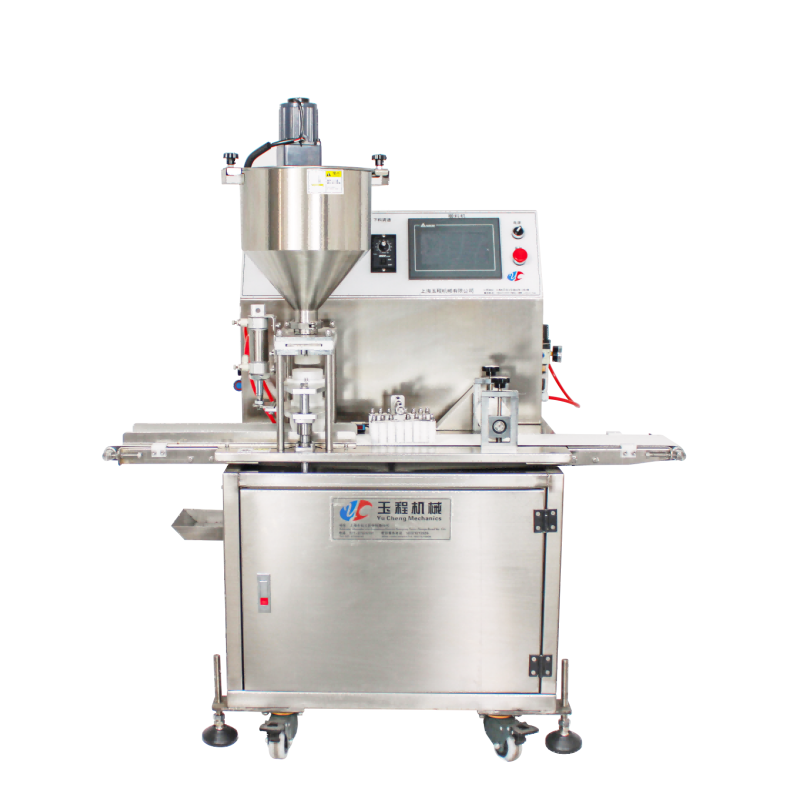To maintain a cookie machine is essential for achieving consistent results and ensuring smooth operations. A well-maintained machine delivers efficiency, produces high-quality cookies, and lasts longer. Neglecting to maintain a cookie machine often leads to unexpected breakdowns, which disrupt production and increase repair costs. By taking proactive steps, you can avoid downtime and keep your machine running at its best. Regular care not only saves money but also enhances the overall performance of your equipment.
Why It’s Important to Maintain a Cookie Machine
Maintaining a cookie machine is not just About keeping it functional. It ensures that your production process remains smooth and efficient. A well-maintained machine produces consistent results, reduces downtime, and saves you from unexpected repair costs. Understanding the importance of regular care helps you get the most out of your equipment.
Benefits of Regular Maintenance
Regular maintenance offers several advantages that directly impact your operations. First, it improves the machine's efficiency. When you clean and inspect the machine regularly, it operates at its optimal capacity, producing high-quality cookies without interruptions. Second, it extends the lifespan of the equipment. Routine care prevents wear and tear, allowing the machine to serve you for years without major issues.
Another benefit is cost savings. By addressing minor issues early, you avoid expensive repairs or part replacements. Regular maintenance also ensures food safety. Cleaning the machine thoroughly prevents contamination, which is crucial for maintaining product quality and meeting health standards. Lastly, it boosts productivity. A well-functioning machine minimizes delays, helping you meet production targets consistently.
Risks of Neglecting Maintenance
Neglecting maintenance can lead to serious consequences. One major risk is unexpected breakdowns. When you ignore routine checks, small problems can escalate into significant failures, halting production and causing delays. This downtime not only disrupts your workflow but also affects your revenue.
Another risk is reduced product quality. A poorly maintained machine may produce unevenly shaped cookies or inconsistent sizes, which can harm your brand's reputation. Neglecting cleaning tasks can also lead to contamination, putting your customers' health at risk and exposing you to legal issues.
Additionally, ignoring maintenance increases long-term costs. Frequent breakdowns and part replacements become inevitable, draining your budget. Over time, the machine's performance declines, forcing you to invest in a new one sooner than expected. By failing to maintain a cookie machine, you compromise both efficiency and profitability.
Daily Maintenance Checklist for a Cookie Machine
Daily maintenance plays a vital role in ensuring your cookie machine operates efficiently. By following a consistent routine, you can prevent minor issues from escalating and maintain the quality of your production. Below is a checklist to guide you through essential daily tasks.
Cleaning Tasks
Cleaning your cookie machine daily is crucial for maintaining hygiene and performance. Residue from dough or ingredients can accumulate and affect the machine's functionality. Start by removing any leftover dough or crumbs from the machine's surfaces. Use a soft brush or cloth to clean areas that are hard to reach.
Focus on cleaning the nozzles, molds, and conveyor belts thoroughly. These parts often come into direct Contact with the dough and can harbor residue. Avoid using abrasive materials that might damage the machine. Instead, use food-safe cleaning solutions recommended by the manufacturer.
After cleaning, dry all components completely to prevent rust or corrosion. Moisture can compromise the machine's parts and lead to long-term damage. A clean machine not only ensures consistent cookie quality but also reduces the risk of contamination.
Inspection and Operational Checks
Inspecting your cookie machine daily helps you identify potential problems early. Begin by checking all visible components for signs of wear or damage. Look for loose screws, cracks, or misaligned parts. Address these issues immediately to avoid further complications.
Run the machine without dough to observe its operation. Listen for unusual noises, such as grinding or squeaking, which may indicate mechanical issues. Check the alignment of moving parts, including belts and gears, to ensure they function smoothly.
Verify that the control panel and settings are working correctly. Adjust the settings according to the manufacturer's guidelines to maintain optimal performance. If you notice any irregularities, consult the user manual or contact a professional technician.
By performing these daily checks, you can maintain a cookie machine in excellent condition. This routine minimizes downtime and ensures your equipment delivers consistent results every day.
Periodic Maintenance Tasks to Maintain a Cookie Machine
Periodic maintenance ensures your cookie machine operates efficiently over the long term. These tasks go beyond daily routines and address deeper issues that may not be immediately visible. By dedicating time to periodic care, you can prevent costly repairs and extend the life of your equipment.
Lubrication and Part Replacement
Lubrication is essential for keeping the moving parts of your cookie machine in top condition. Friction between components can cause wear and tear, leading to mechanical failures. To avoid this, apply the recommended lubricant to gears, bearings, and other moving parts. Always use the type of lubricant specified by the manufacturer to ensure compatibility and effectiveness.
Inspect the machine for worn-out or damaged parts during lubrication. Components like belts, seals, and nozzles may degrade over time. Replace these parts promptly to maintain the machine's performance. Delaying part replacement can lead to more significant issues, such as misalignment or breakdowns. Keep a record of replaced parts to track the machine's maintenance history.
Performing lubrication and part replacement regularly helps you maintain a cookie machine at its peak efficiency. This practice reduces downtime and ensures consistent production quality.
Deep Cleaning and Sanitization
Deep cleaning removes buildup that daily cleaning might miss. Over time, residue from dough and ingredients can accumulate in hard-to-reach areas, affecting the machine's performance and hygiene. Schedule deep cleaning sessions periodically to address these hidden contaminants.
Disassemble the machine according to the manufacturer's instructions. Clean each component thoroughly using food-safe cleaning agents. Pay special attention to areas like molds, nozzles, and conveyor belts, as these parts come into direct contact with the dough. Use brushes or specialized tools to reach crevices and corners.
After cleaning, sanitize all components to eliminate bacteria and other harmful microorganisms. Rinse and dry the parts completely before reassembling the machine. Proper sanitization ensures food safety and maintains the quality of your cookies.
Deep cleaning and sanitization not only improve the machine's functionality but also help you comply with health and safety standards. This step is crucial for maintaining a cookie machine that delivers reliable and hygienic results.
Troubleshooting Common Issues in a Cookie Machine
Machine Not Starting
When your cookie machine fails to start, the issue often lies in basic operational errors or electrical problems. Begin by checking the power supply. Ensure the machine is plugged in securely and the outlet is functioning. Test the outlet with another device to confirm it provides power.
Inspect the machine’s main switch. Sometimes, the switch may not be fully engaged. Flip it off and on again to ensure proper activation. Examine the control panel for error messages or warning lights. These indicators often provide clues about the problem.
If the machine still doesn’t start, check for tripped circuit breakers or blown fuses. Replace any damaged fuses with ones that match the manufacturer’s specifications. For persistent issues, consult the user manual or contact a professional technician. Avoid attempting complex repairs without proper expertise to prevent further damage.
Uneven Cookie Shapes or Sizes
Uneven cookie shapes or inconsistent sizes usually result from mechanical misalignments or dough-related issues. Start by inspecting the nozzles and molds. Residue buildup can block these components, affecting the shape of the cookies. Clean them thoroughly to restore proper function.
Check the dough consistency. Dough that is too thick or too thin can lead to irregular shapes. Adjust the dough mixture according to the recipe and ensure it flows smoothly through the machine. High-quality ingredients often yield better results.
Examine the conveyor belt and other moving parts. Misaligned belts or gears can disrupt the cookie-forming process. Realign these components based on the manufacturer’s guidelines. If the problem persists, consider replacing worn-out parts. Regular maintenance minimizes such issues and ensures uniform cookie production.
Overheating or Unusual Noises
Overheating and strange noises signal mechanical stress or component failure. When the machine overheats, turn it off immediately to prevent further damage. Allow it to cool before inspecting the components. Check for clogged vents or fans. Clean these areas to improve airflow and reduce heat buildup.
Unusual noises, such as grinding or squeaking, often indicate worn-out or misaligned parts. Inspect the gears, belts, and bearings for visible damage. Apply lubricant to moving parts to reduce friction. Use only the lubricant recommended by the manufacturer.
If the noise persists, tighten loose screws or bolts. Vibrations during operation can loosen these fasteners over time. For severe issues, such as broken components, seek professional assistance. Addressing overheating and unusual noises promptly prevents long-term damage and ensures safe operation.
Regular maintenance is the key to keeping your cookie machine running efficiently and extending its lifespan. By staying proactive, you avoid costly repairs and ensure consistent production quality. Troubleshooting common issues and following expert tips help you address problems quickly and effectively.
"A well-maintained machine is an investment in your success."
Make maintenance a priority in your daily routine. Clean, inspect, and log every task to stay organized. With consistent care, your cookie machine will deliver reliable performance and support your business for years to come.
Table of Contents
- Why It’s Important to Maintain a Cookie Machine
- Benefits of Regular Maintenance
- Risks of Neglecting Maintenance
- Daily Maintenance Checklist for a Cookie Machine
- Cleaning Tasks
- Inspection and Operational Checks
- Periodic Maintenance Tasks to Maintain a Cookie Machine
- Lubrication and Part Replacement
- Deep Cleaning and Sanitization
- Troubleshooting Common Issues in a Cookie Machine
- Machine Not Starting
- Uneven Cookie Shapes or Sizes
- Overheating or Unusual Noises






